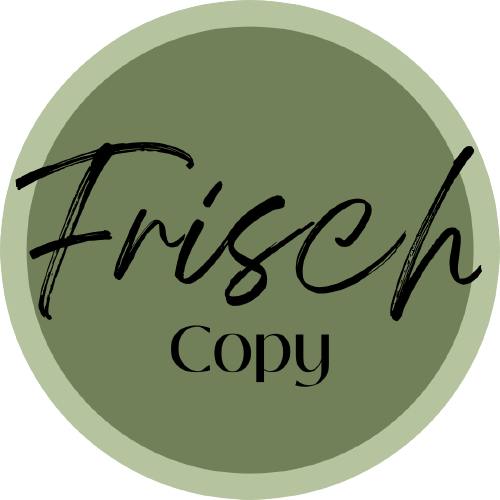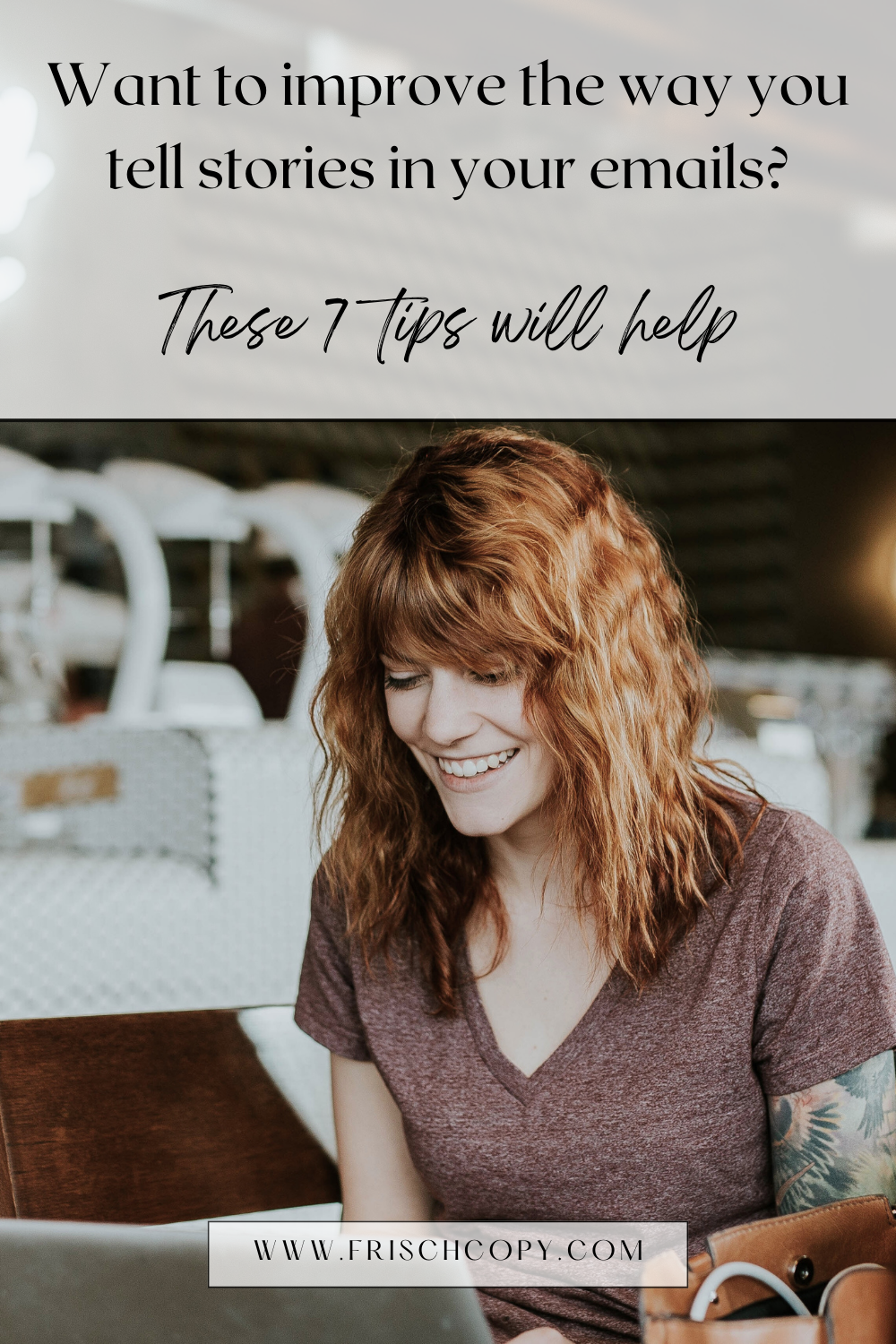7 Tips to improve your email copy & tell better stories
Do a simple Google search on email copywriting and you’re guaranteed an endless supply of articles. You’ll find all the basic tips and tricks you could ever dream of to get you started with just about any type of email you want to write. This is great!
That is, unless you want to create truly meaningful emails that are infused with storytelling and real-life examples… you know, the kind people actually want to read. When it comes to THAT, the articles are few and far between.
People’s inboxes are already filled to the brim with promos, sales, product launches, and other attempts to get them to buy. And if that’s all you’re sending your community, you’ll likely find that your sales aren’t as successful as you’d like them to be.
It’s 2023. People aren’t just buying from ANYone these days. They’re looking for connection, trust, and brands they really feel aligned with. And that’s why loading your emails with stories is so damn important!
Your stories help you stand out, build up that know, like, and trust factor that any entrepreneur or biz owner craves (and really, needs), and place the reader in your shoes. Yup, they make you relatable! Our brains are wired to learn from story, so when you’re able to put all the juicy details of your offer into an emotion-packed message, your readers can imagine how good it’ll feel once they benefit from what you’re putting out into the world.
So while basic email copywriting tips are easy to come by, I want to share some that are specific to storytelling too.
These 7 tips will help you be a better storyteller, create deeper connections with the people in your community, and make a bigger impact.
Sounds pretty damn good to me!
One. Know when to use passive voice (yes, you CAN use it!)
Many people will say you should avoid it altogether, but there ARE actually times when using it might work better for your story.
First, if you’re unfamiliar with the whole active voice/passive voice thing, it’s basically how you choose to structure your sentence around whatever action is happening.
Active voice: The sentence clearly explains what a person (or thing) is doing.
Passive voice: The sentence explains what is happening to a person (or thing) but isn’t always clear on who (or what) is doing the action.
So, a (very basic) example:
Active - She opened the window.
Passive - The window was opened.
Typically, you’ll read about how you should ALWAYS use active voice. It’s the clearest way to write and it leaves no question as to who is doing what (and who they’re doing it to).
Passive voice, while a little more unclear, can be used to intentionally withhold info though. So you might actually WANT to use it, depending on your story. If you want to hold off on exposing the details until later down the line, choosing to use the passive voice is the perfect option.
Sure, you should always aim to make your story as clear as possible. But to say don’t use passive voice at all is very limiting. Don’t let people hold you back 😉
Two. Add just the right amount of fluff
In general, copywriting is all about being clear, concise, and compelling. (If I had a dollar for every time I’ve heard that!) But the nice thing about copywriting is… you also can break the rules and do what works for you and your audience.
Some people claim longer emails will never get read. Yet, some of my favorite brands send out emails that easily go over 1000 words, and they’re GREAT. So as you're writing the story in your email, don’t be afraid to fill it in with some details here and there.
Adding a little bit of fluff can make your story more human. I like to think of it like this: you and your reader are listening to a story. As the narrator is telling it, it’s like you’re there to whisper extra details to your reader… ones that aren’t technically necessary BUT they help embellish and flesh out the story.
The fluff can give extra context, help dig into emotions, or tie in a seemingly random topic that ends up being related.
Three. Nail the formatting (no word walls, please)
When people open up an email, they’re expecting a different experience than reading a novel or a blog post. Yet so often I see people treating emails in a very similar way. And while formatting doesn’t seem important, if your email is hard to read… no one is going to give it a second thought. And that would be a shame to let a good story go to waste!
Most people read emails from their phone and if they open to see nothing but a big chunk of words, it’s overwhelming. Don’t hit them with a wall of bricks, er, um, text.
Break your story up line by line. Use bold or italics or CAPITALIZE SOMETHING to emphasize it and make it stand out.
This isn’t English class. You’re allowed to break all the rules and write in a way that reads more conversationally. A paragraph doesn’t need to have 3 sentences, it can just have one.
Yup, it feels good to break the rules, doesn’t it? 🙃
Four. Create rhythm and flow
Have you ever tried to have a conversation where you make all your sentences the same exact length? No? Yea, me neither. But give it a try. You’ll quickly find that it sounds extremely unnatural to talk that way.
Actually, just go ahead and read this sentence. If you read closely, you’ll find a surprise. It might be easy to miss at first. But keep reading and it will become clear. So, are you incredibly bored with it yet? I am too so I’m going to stop.
UGH that was hard. All those sentences were the same length (8 words each if I didn’t mess up, heh). Reading it sounds boring and monotonous.
So while it’s unnatural to talk that way, the same goes for reading and writing too. As you’re writing out your story, make sure to vary the sentence lengths. Not all long, not all short.
Remember how we can say “screw you!” to all the English class rules? Well, you can even drop a few words down to their very own line to add even more emphasis!
Five. Establish a clear brand voice
Even if you’re running things solo, you still need to keep a strong brand voice in mind as you're writing your emails.
Think about it. Let’s say you opened up an email from a brand who is typically very informal and friendly. Their stories are filled with slang and sometimes a few swear words sprinkled in. What if you opened the next email from them and it was written very professionally. It almost seemed sterile and emotionless… just a matter-of-fact tone and no room for feeling more human (not even close to being like an email between friends, huh).
How would that experience leave you feeling? I’d certainly be confused as hell! Like, is this even from the same person or brand?!
As you’re sending emails and sharing stories, make sure you’re consistent in the words, tone, expressions, etc. that you’re using.
Six. Differentiate yourself
First, start by asking yourself these important questions:
How are YOU different from the other people who do what you do?
And if someone reads all your emails, will they know those differences?
As you’re writing to your community, if you’re just sharing factual tid bits about what you do, your readers are going to lose interest. ANY of your competitors could be doing the same thing, after all.
But when you infuse those tid bits about what you do and who you serve into a story from your life, biz, someone you know, etc., it becomes interesting, engaging, and it sticks. The stories give people a peek into your life. They help expose your thoughts, feelings, ideas, perspectives, and knowledge in different areas.
And these are exactly the kinds of things that will help people create a clear image of you and help you stand out.
Seven. Cut back on the exaggerations
Okay, so there’s a time and a place for drama in your emails and emphasizing details inappropriately can get you into some deep doo doo.
For example, what if you said, “I told my friend a million times and she still didn’t remember my dog’s name!” Did you REALLY say it a million times? No. But we get the sense that you said it a lot and that you’re likely annoyed about it. Exaggeration here? Totally cool.
But, if you said something like, “Once you sign up for my program, give it a month or so and you’ll practically be making millions.” Uuummm, yea this isn’t a good way to exaggerate that they’ll make a lot. It could very easily be taken as a false promise and you’ll likely have a lot of unhappy future students!
One of the most powerful reasons to tell stories is that they help you become more relatable. If you’re throwing in wild promises or inflated numbers, the trust will go down. Promises of making 6 figures in three weeks! Or working 5 hours and making 5 figures! …they don’t sound as enticing as people may think. They seem unreasonable, unattainable, and unapproachable.
Be real with what people can expect from you! Leave the exaggerations for topics that aren’t related to their money 😉
Sharing stories in emails can be scary and I totally get that. It didn't come easy to me right away and sometimes, I still second-guess what I’m writing. We’re only human, after all!
If you’re still newer to the storytelling game and need help figuring out what to write in the first place, this guide will be your best friend. You’ll learn how to identify the perfect stories for your emails and start writing them with more confidence. You can grab that here 😊
Thinking you’d rather leave the storytelling to a pro? I know a gal 😉
Let’s have a chat! I’d love to learn about what you do and see how I can support you.
What email storytelling tip is your fave? Is there something you swear by that I didn’t include here? Let me know below!



